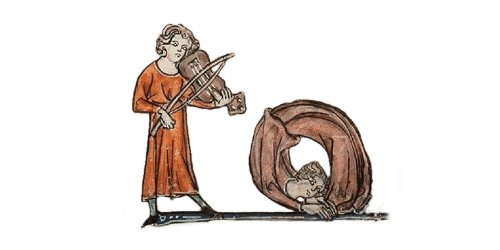Music review: ‘Perpetual Motion’ inspires with celestial sounds
By Heather J. Morris
POSTED: 02/10/16, 1:57 PM PST
I heard it said recently, “Ah, Baroque music – that’s old stuff, outdated and tedious.” But for the people living back in the 17th century, however, it was cutting edge, avant-garde.
This was brought home vividly on Saturday evening by the program presented by the Santa Cruz Baroque Festival which drew a completely full house at UC Santa Cruz’s recital hall. The festival, now in its 43rd season, often tries to bring something new, something outlandish to a performance of baroque music. In the past few years audiences have been enthralled to see Vivaldi’s famous “Four Seasons” performed in its entirety on Japanese kotos, and Bach’s music was once memorably rendered on marimba.
In “Perpetual Motion: Galileo and his Revolutions,” the New York-based ensemble Galileo’s Daughters played Baroque music for soprano, lute and viola da gamba and paired it up with cutting-edge video animation by musician and videographer Marc Wagnon, who used footage shot by the Hubble telescope as well as his own photography of celestial landscapes and majestic cloudscapes.
These beautiful images, sometimes breathtaking in their detailed topography of the planets, created a visual accompaniment to the spoken word and music. The narrator for the evening was celebrated astrophysicist and Professor Emeritus at UCSC Frank Drake, one of the pioneers in the search for extraterrestrial intelligent life in the universe. Drake read extracts from the 1999 biography “Galileo’s Daughter” by science journalist Dava Sobel, a long-time friend of Drake’s.
The book is based on the letters of pioneering astronomer Galileo’s eldest daughter Virginia. However, Galileo’s father, Vincenzo Galilei, was an accomplished composer and music theorist who wrote a treatise on singing and also experimented with the properties of strings in music. As the presentation progressed, I was reminded of a performance in 2014 when the Philip Glass Festival brought “Icarus at the Edge of Time” where a TED talk on a different sort of string theory by Brian Greene preceded a wonderful sci-fi movie with live music by the Philip Glass ensemble.
Wagnon’s wife Sarah Pillow, the founder of this early music ensemble, provided the vocals and her presentation was animated and delightful. It’s a pity the words of her songs, with lines like “Harrowed and agitated by my incessant jealous worries” from Cavalli’s aria “Dalle gelose mie” from “La Calisto” (1652) couldn’t have been super-titled on the screen, and though printed in the program it was too dark in the recital hall to read them.
All the music was composed by composers roughly contemporary with Galileo, some with instantly recognizable names – Monteverdi, Purcell and Palestrina, while others, like Barbara Strozzi and Francesco da Milano are lesser known. From the moment Grammy-nominated lutenist Ronn McFarlane began the program with an exquisite solo, a hush descended upon the audience as if spellbound. No wonder the lute’s tone was once thought to have the power to transport the listener into a kind of ecstasy: it was one of the most esteemed and admired of all musical instruments during the Renaissance period.
The viola da gamba, though gentle, is very similar to the human voice and Mary Anne Ballard, who has taught at Princetown University and the Peabody Conservatory, made the instrument sing both in the instrumental pieces and when acting as a continuo accompanying the soprano. It was fascinating to experience the music that Galileo would have known even as he was grinding the lens that created the “spy glass” which allowed him to see the mountains on the moon for the first time. After the concert, as I walked back to my car, I found myself gazing up at the night sky and its myriad stars with a new appreciation for the music of the spheres and the harmony of the world.


